The world of exotic birds represents one of the most colorful and fascinating segments of the pet trade. Beyond the common parakeets and cockatiels found in many homes, there exists a realm of rare, exotic, and extraordinarily expensive avian companions that can command prices rivaling luxury cars or even modest homes. These birds are prized for their striking beauty, remarkable intelligence, extraordinary longevity, or extreme rarity—sometimes all of these qualities combined. The exotic bird market sits at a complex intersection of conservation, wealth, and passionate aviculture, where prices reflect not just the birds’ intrinsic qualities but also their breeding difficulty, legal status, and cultural significance. Let’s explore the most valuable feathered treasures that grace the upper echelons of the pet trade, examining what makes them so special and why collectors are willing to pay astronomical sums to call them their own.
Hyacinth Macaw: The Gentle Giant
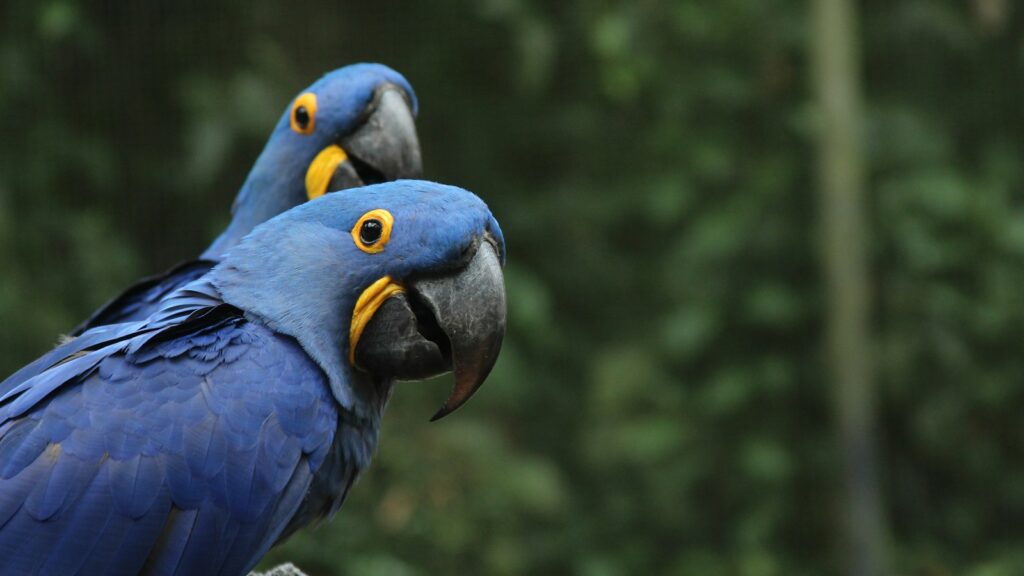
Commanding prices between $40,000 and $65,000, the Hyacinth Macaw (Anodorhynchus hyacinthinus) reigns as one of the most expensive birds in the pet trade. As the largest flying parrot species, these magnificent blue beauties can reach nearly 3.5 feet from beak to tail tip and possess a wingspan approaching four feet. Their striking cobalt-blue plumage, contrasted by vibrant yellow eye rings and chin patches, makes them visually spectacular, while their gentle temperament belies their imposing size. The high price tag reflects both their endangered status in the wild—with fewer than 6,500 remaining in their native South American habitats—and the significant challenges associated with their breeding in captivity, including specific nutritional requirements and specialized nesting needs. Hyacinth Macaws also boast exceptional longevity, potentially living 50-60 years with proper care, making them multi-generational investments for those fortunate enough to afford them.
Palm Cockatoo: The Smoky Aristocrat
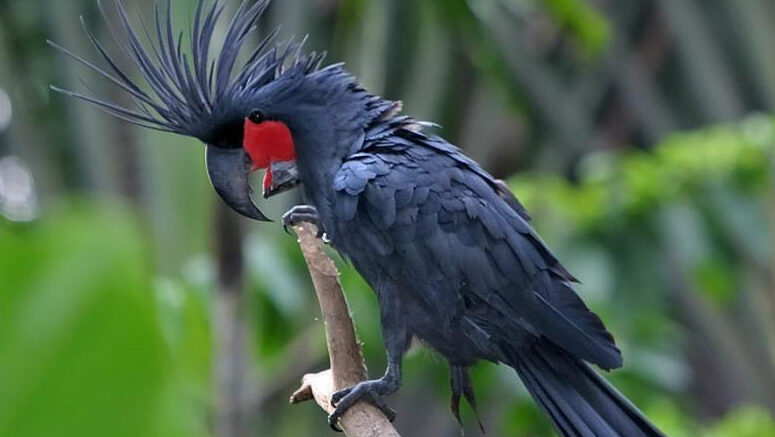
The Palm Cockatoo (Probosciger aterrimus), often fetching $15,000 to $40,000, stands as one of the most distinctive and sought-after birds in aviculture. Native to northern Australia, New Guinea, and surrounding islands, these birds are immediately recognizable by their imposing size, charcoal-gray to black plumage, and extraordinary red cheek patches that can change intensity based on the bird’s mood. What truly sets them apart, however, is their remarkable crest—large, elaborate, and fan-shaped when fully extended—coupled with one of the largest and most powerful beaks in the parrot world. Palm Cockatoos have captivated aviculturists not just for their appearance but for their remarkable intelligence and unique behaviors, including tool use in the wild where they craft “drumsticks” from branches to establish territory. Their extreme breeding difficulties in captivity, with pairs producing at most one egg every two years and low survival rates for chicks, primarily drive their steep price, making successful captive breeding a significant achievement in the aviculture community.
Black Palm Cockatoo: The Rarest Variation
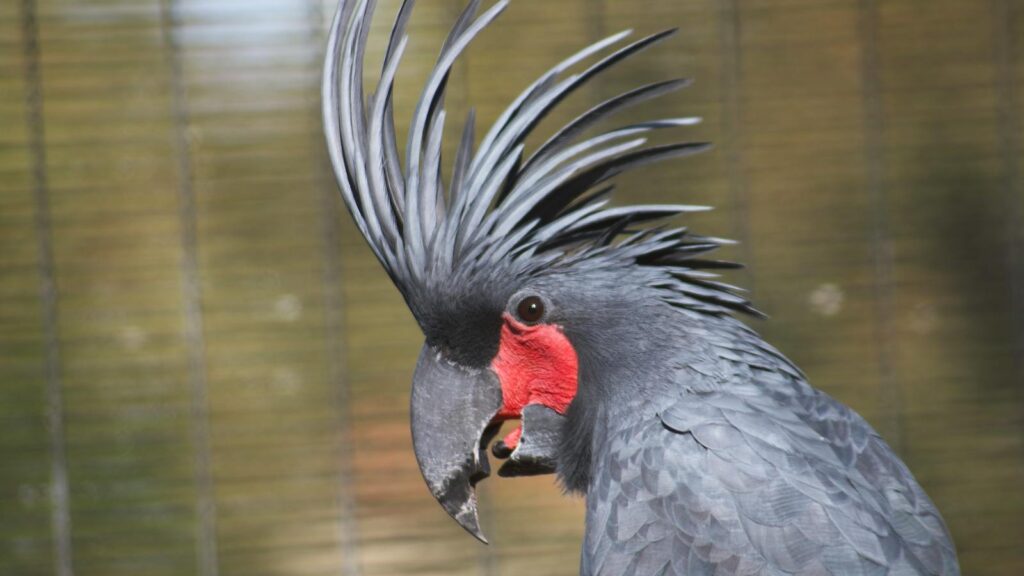
The Black Palm Cockatoo, a particularly rare color morph of the standard Palm Cockatoo, represents one of the ultimate status symbols in exotic bird ownership, commanding breathtaking prices of $65,000 to $100,000 for exceptional specimens. These birds display an intensely dark, almost pure black plumage rather than the charcoal-gray of typical Palm Cockatoos, creating a striking contrast with their red facial patches. Their rarity cannot be overstated—with fewer than 1,000 estimated to exist in captivity worldwide and breeding success rates even lower than their standard counterparts. Beyond their arresting appearance, these birds inherit all the remarkable behavioral traits of Palm Cockatoos, including their tool-using abilities and complex vocalizations, but with the added prestige of exceptional rarity. The astronomical price reflects not just acquisition costs but the substantial investment required for their specialized care, including custom aviaries with reinforced materials to withstand their immensely powerful beaks, specialized diets rich in native nuts, and experienced veterinary care from specialists with specific knowledge of the subspecies.
Eclectus Parrot: Dimorphic Royalty

The Eclectus Parrot (Eclectus roratus) represents one of the most sexually dimorphic of all parrot species, with males and females appearing so different they were once classified as separate species. While standard Eclectus Parrots typically sell for $1,000 to $3,000, the extraordinarily rare mutations like the blue mutation can command prices upward of $15,000 to $25,000. Males display brilliant emerald green plumage with candy-corn colored beaks, while females showcase stunning scarlet and royal purple feathering with black beaks—a dramatic difference serving evolutionary purposes in their native rainforest habitats. These highly sought-after birds have complex dietary requirements that differ between sexes, with females particularly vulnerable to health issues like hypovitaminosis A and calcium deficiencies without specialized nutrition. Among collectors, the rarest color mutations—such as the blue, lutino, and cinnamon varieties—drive the highest prices, with proven breeding pairs of rare mutations sometimes selling for more than $50,000, as they represent genetic goldmines for serious breeders.
Goliath Cockatoo: The Towering White Spirit
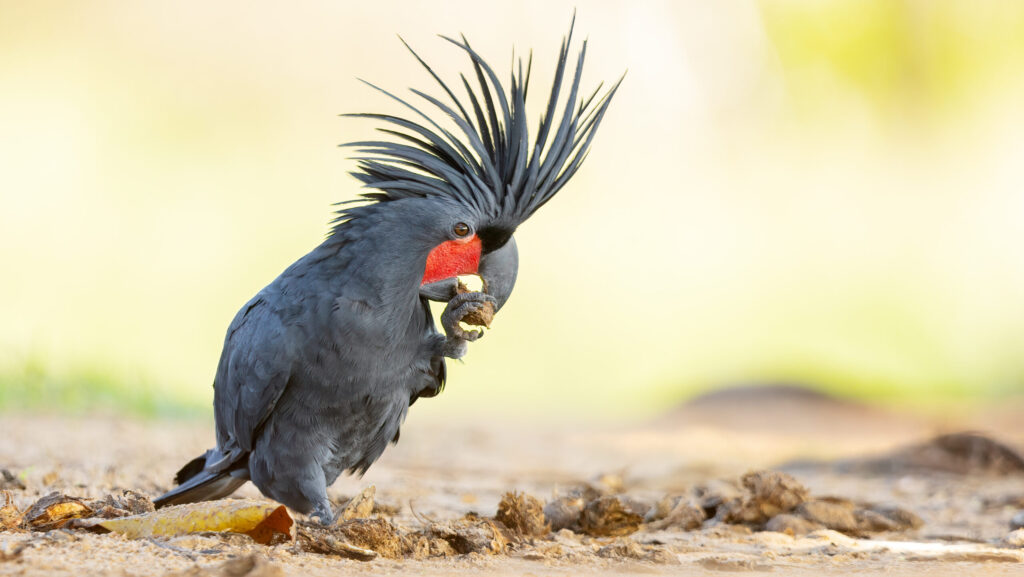
The Goliath Cockatoo, also known as the Palm Cockatoo (Probosciger aterrimus goliath), represents the largest and most imposing subspecies of the already impressive Palm Cockatoo, commanding prices between $50,000 and $90,000 for exemplary specimens. Native to the forests of New Guinea, these magnificent birds can reach over 24 inches in length, with massive proportions throughout their bodies, including their signature powder-coated black plumage, distinctive red facial patches, and immense crests that can extend dramatically when the bird is excited or alarmed. Their rarity in captivity stems from extremely complex breeding requirements, including specialized nesting materials, precise humidity control, and expert nutritional management. The Goliath variety exhibits particularly intense intelligence even among Palm Cockatoos, with some owners reporting remarkable problem-solving abilities, including manipulating complicated locks and remembering multi-step processes for rewards. Their extreme price reflects not just their imposing appearance but their place as arguably the most challenging of all parrot species to maintain in captivity, requiring specialized facilities and expert care from experienced aviculturists.
Queen of Bavaria (Spix’s Macaw): The Extinct in the Wild Treasure
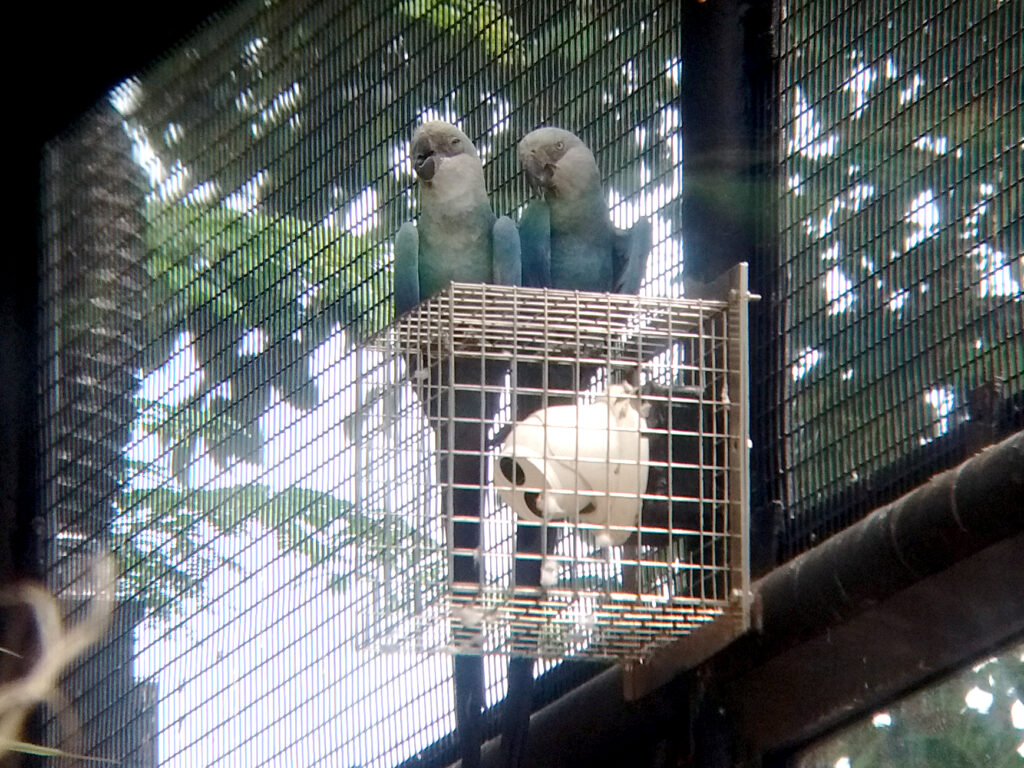
The Spix’s Macaw (Cyanopsitta spixii), immortalized in the animated film “Rio,” holds the sobering distinction of being extinct in the wild, with the last known wild specimen disappearing in 2000 from its native Brazilian habitat. With fewer than 160 individuals existing worldwide in protected breeding programs, these birds are essentially priceless, though illegal specimens have reportedly changed hands for upwards of $200,000 on the black market. Their distinctive powder-blue plumage and relatively small size (for macaws) make them visually striking, while their intelligence and engaging personalities made them prized companions before conservation concerns came to the forefront. Today, legitimate ownership is essentially impossible, as all known specimens participate in carefully managed conservation breeding programs coordinated between specialized facilities in Brazil, Germany, and Qatar. The Association for the Conservation of Threatened Parrots (ACTP) maintains the largest population of these birds, working toward the ambitious goal of reintroducing them to protected habitats in their native range, making them a powerful symbol of both human-caused extinction and the intensive efforts required for species recovery.
Bolivian Blue-Throated Macaw: The Conservation Success Story
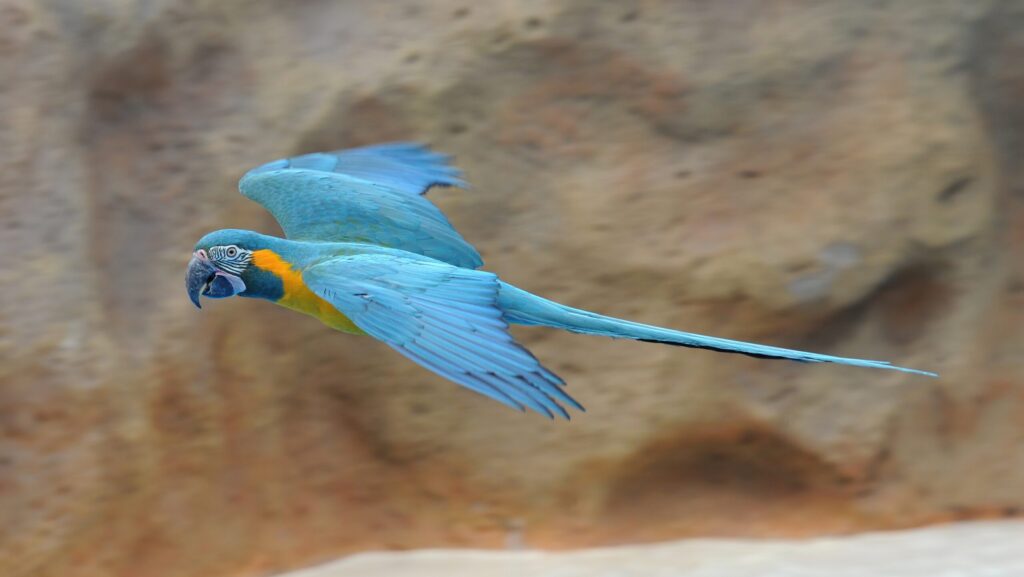
The Blue-throated Macaw (Ara glaucogularis), native to a small region of northern Bolivia, represents one of the most beautiful—and once most endangered—macaws in the world, with prices ranging from $10,000 to $20,000 for legally bred specimens. Displaying a stunning combination of turquoise-blue upperparts contrasted with golden-yellow underparts and a distinctive blue patch on the throat that gives the species its name, these birds are immediately recognizable to enthusiasts. Their extreme rarity stems from a perfect storm of habitat loss in their native range combined with decades of intense poaching pressure before receiving strong protection. Captive breeding success has improved their global population significantly, though with only about 400-450 individuals remaining in the wild, they remain critically endangered. The high price of legally acquired specimens reflects both their beauty and the considerable investment in specialized breeding programs, with reputable breeders typically investing portions of their proceeds into conservation efforts for wild populations through organizations like the World Parrot Trust and the Blue-throated Macaw Conservation Program.
Black-Necked Red Cotinga: The Jewel Among Fruit-Eaters
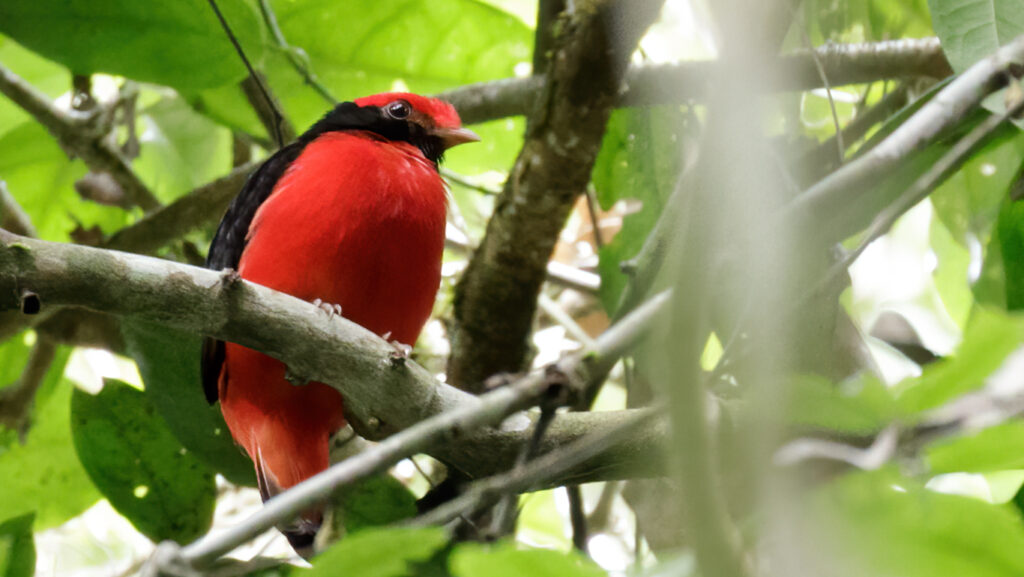
The Black-necked Red Cotinga (Phoenicircus nigricollis) represents one of the most sought-after non-parrot species in the high-end aviculture world, commanding prices between $25,000 and $45,000 when rarely available. Native to the Amazon basin, these birds showcase an extraordinary combination of crimson plumage across most of their body with stark black necks and wings, creating a visual impact belying their relatively small size of approximately 9 inches. Unlike many expensive birds in aviculture that belong to the parrot family, cotingas represent a completely different avian lineage, prized for both their extraordinary beauty and the extreme difficulty in maintaining them in captivity. Their specialized diet focused on specific rainforest fruits makes them exceptionally challenging to maintain long-term, requiring expert nutritional knowledge and often custom-formulated diets. Their steep price reflects not just their beauty and rarity but the significant expertise required for successful husbandry, with only a handful of private collectors worldwide having demonstrated long-term success with this species.
Moluccan Cockatoo: The Salmon-Hued Showstopper
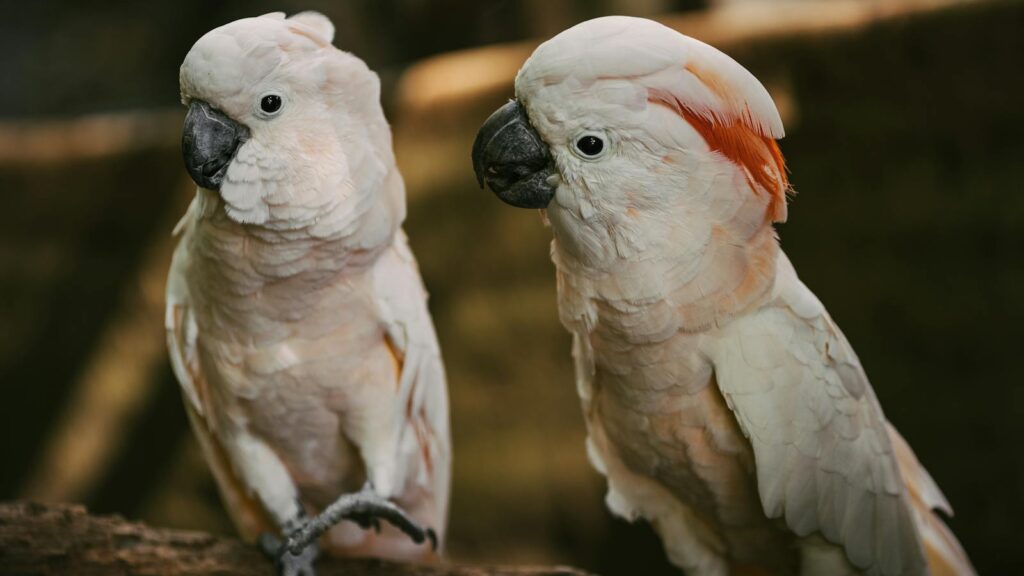
The Moluccan Cockatoo (Cacatua moluccensis), also known as the Salmon-crested Cockatoo, commands prices between $8,000 and $15,000 for well-socialized specimens, representing one of the most visually striking cockatoo species. Native to the Seram archipelago of Indonesia, these large birds display a primarily white plumage with a distinctive salmon-pink tint and an impressive crest that unfurls into a dramatic fan when the bird is excited, displaying deeper salmon-colored feathers underneath. Beyond their beauty, Moluccan Cockatoos are renowned for their extraordinary intelligence and emotional complexity, forming deep bonds with their human caregivers and demonstrating problem-solving abilities comparable to those of young children. The high price reflects not just their beauty but the significant challenges they present as pets, including extreme noise levels (reaching over 120 decibels), powerful beaks capable of destructive behavior, and complex emotional needs that can lead to self-harming behaviors if not properly addressed. Their endangered status in the wild due to habitat loss and capture for the pet trade has placed them on CITES Appendix I, meaning only captive-bred specimens can be legally traded, further increasing their market value.
Lear’s Macaw: The Indigo Marvel
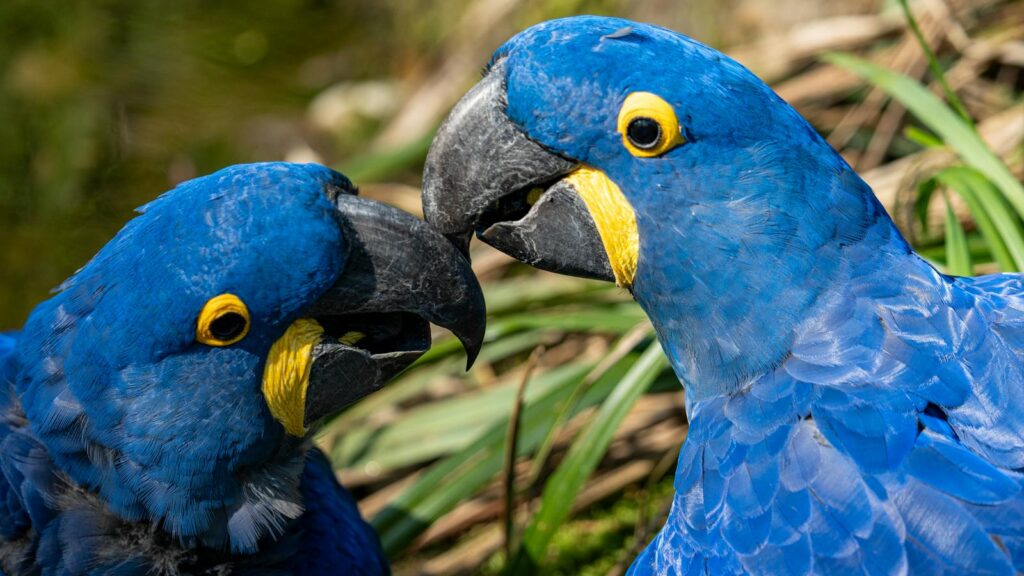
The Lear’s Macaw (Anodorhynchus leari), sometimes called the Indigo Macaw, represents one of the rarest and most expensive legally-available macaws, with prices ranging from $75,000 to $130,000 on the rare occasions when they become available through specialized breeders. Native to a small region in eastern Brazil, these striking birds display deep indigo-blue plumage with distinctive yellow patches around their eyes and at the base of their large beaks, presenting a visual profile similar to but distinctly different from their close relative, the Hyacinth Macaw. With fewer than 1,200 individuals remaining in the wild, their conservation status remains precarious despite significant improvement from the 1980s, when fewer than 70 birds were known to exist. The astronomical price reflects both their extreme rarity in captivity and the specialized breeding facilities required to maintain and reproduce them successfully, including large, secure aviaries with specific types of nesting materials. While technically available in the legal pet trade from a handful of established breeding programs worldwide, most specimens remain in conservation-focused breeding programs rather than private ownership.
Glaucous Macaw: The Ghost of the Pampas

The Glaucous Macaw (Anodorhynchus glaucus), potentially extinct both in the wild and in captivity, represents the ultimate “ghost bird” in aviculture—a species so rare that verified specimens would likely command prices exceeding $250,000 if they were ever to appear legally in the market. Once native to the riverine forests along the Uruguay River basin across Argentina, Uruguay, Paraguay, and Brazil, these birds displayed a distinctive grayish-blue plumage lighter than their Hyacinth Macaw relatives, with similar yellow facial patches creating a hauntingly beautiful appearance. Their decline and probable extinction stemmed from the destruction of their specialized habitat centered around palm forests that provided their primary food source of yatay palm nuts. The last reliably documented wild specimen was recorded in the 1960s, though occasional unverified reports of sightings continue to tantalize ornithologists and collectors alike. Some aviculturists maintain hope that undiscovered specimens might exist in remote private collections or in overlooked wild pockets of their historical range, making them the avian equivalent of a “blue-chip investment” should verifiable specimens ever emerge.
Imperial Amazon: The Regal Rarity

The Imperial Amazon (Amazona imperialis), also known as the Dominican Amazon or August Amazon, stands as one of the most majestic and expensive parrot species, with theoretical prices estimated between $100,000 and $150,000, though legal specimens are effectively unavailable in the private market. Native exclusively to the mountainous forests of Dominica in the Caribbean, these large amazons display a breathtaking combination of deep purple, green, and maroon plumage, with distinctive red wing patches visible in flight and imposing physical size making them the largest of all Amazon parrots. With fewer than 50 individuals estimated to remain in the wild following the devastation of Hurricane Maria in 2017, they hold the unfortunate distinction of being among the world’s most critically endangered parrots. The species is fully protected under CITES Appendix I and Dominican law, making legal trade virtually impossible, though rumors of black market specimens occasionally surface with astronomical asking prices. Conservation efforts focus exclusively on habitat protection and monitoring of the remaining wild population rather than captive breeding, meaning the Imperial Amazon will likely remain one of the few parrot species that money alone cannot acquire regardless of a collector’s resources.
Ethical Considerations in the Exotic Bird Trade
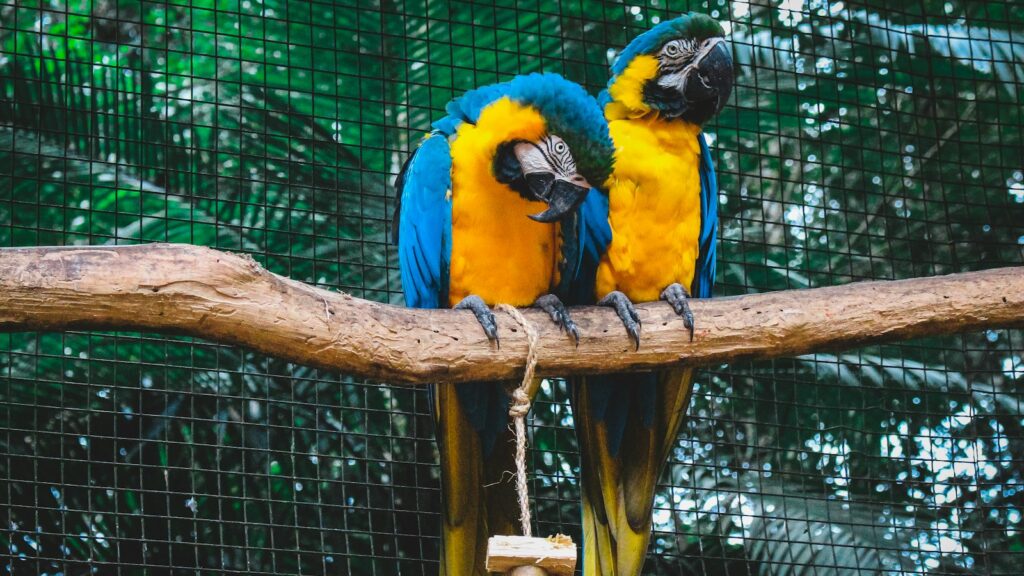
The exotic bird trade exists at a complex ethical intersection where conservation, animal welfare, and cultural practices converge, raising profound questions about the morality of keeping rare species as companions. For critically endangered species, the impact of collection from wild populations can push already vulnerable species closer to extinction, creating an ethical imperative for potential owners to verify that any rare birds they acquire come from legitimate captive breeding programs with appropriate documentation. Even with captive-bred specimens, the extreme intelligence and complex emotional needs of many high-value birds, particularly parrots, raise welfare concerns about whether private ownership can truly provide appropriate lifetime care for creatures that may outlive their owners and require extraordinarily specific environmental, nutritional, and social conditions. The trade also intersects with broader questions of privilege and conservation resources, as the funds spent on a single specimen for private ownership could potentially support habitat conservation benefiting entire wild populations. Ethical buyers increasingly seek to ensure their purchases support, rather than undermine, conservation efforts, looking for breeders who contribute to in-situ conservation and refusing to participate in markets for species that cannot be sustainably or humanely maintained in captivity.
Legal Framework Surrounding Expensive Exotic Birds
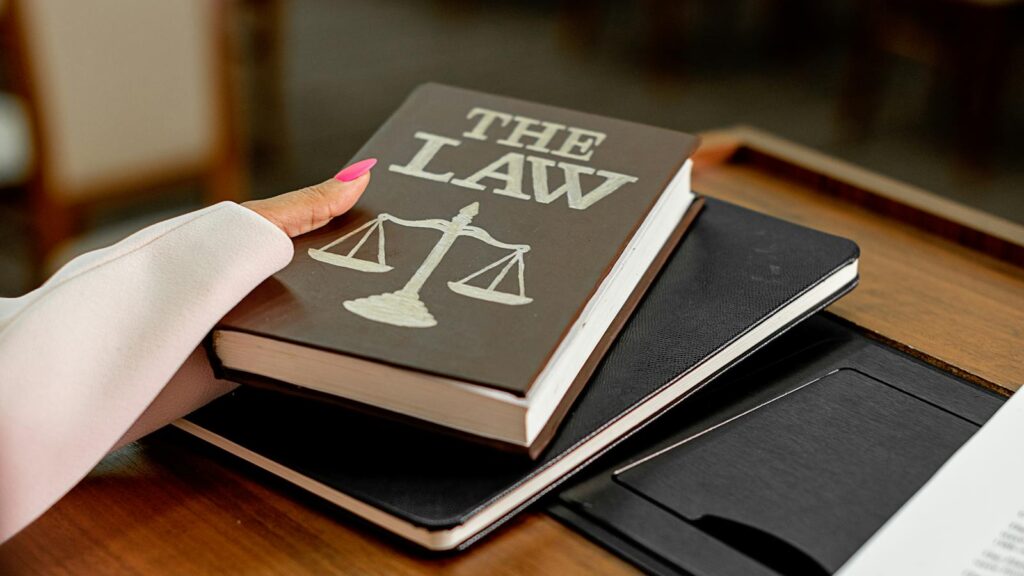
The legal landscape governing the trade in expensive exotic birds represents a complex patchwork of international treaties, national laws, and local regulations designed to protect both wild populations and ensure the welfare of captive specimens. At the international level, the Convention on International Trade in Endangered Species (CITES) categorizes protected birds into three appendices, with Appendix I species (like Spix’s Macaws and Imperial Amazons) effectively banned from commercial international trade, while Appendix II species require export permits certifying that trade won’t harm wild populations. Individual countries frequently implement even stricter regulations, with the United States’ Wild Bird Conservation Act of 1992 prohibiting the

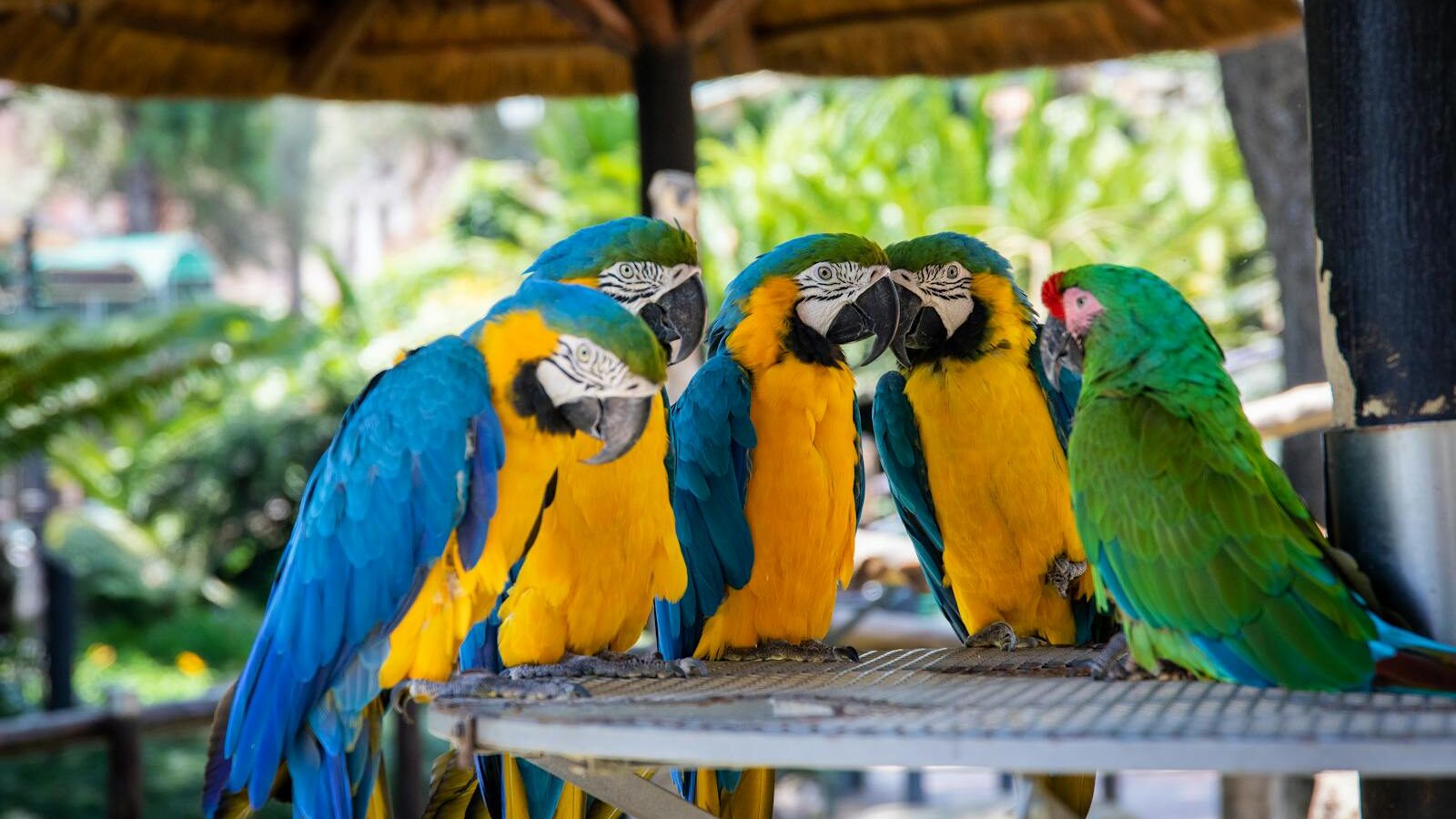

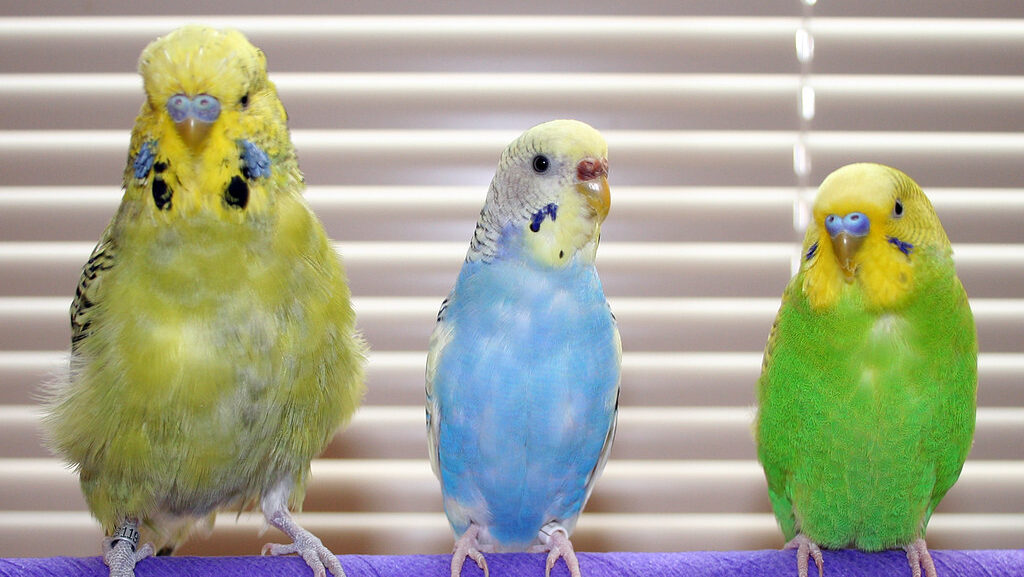

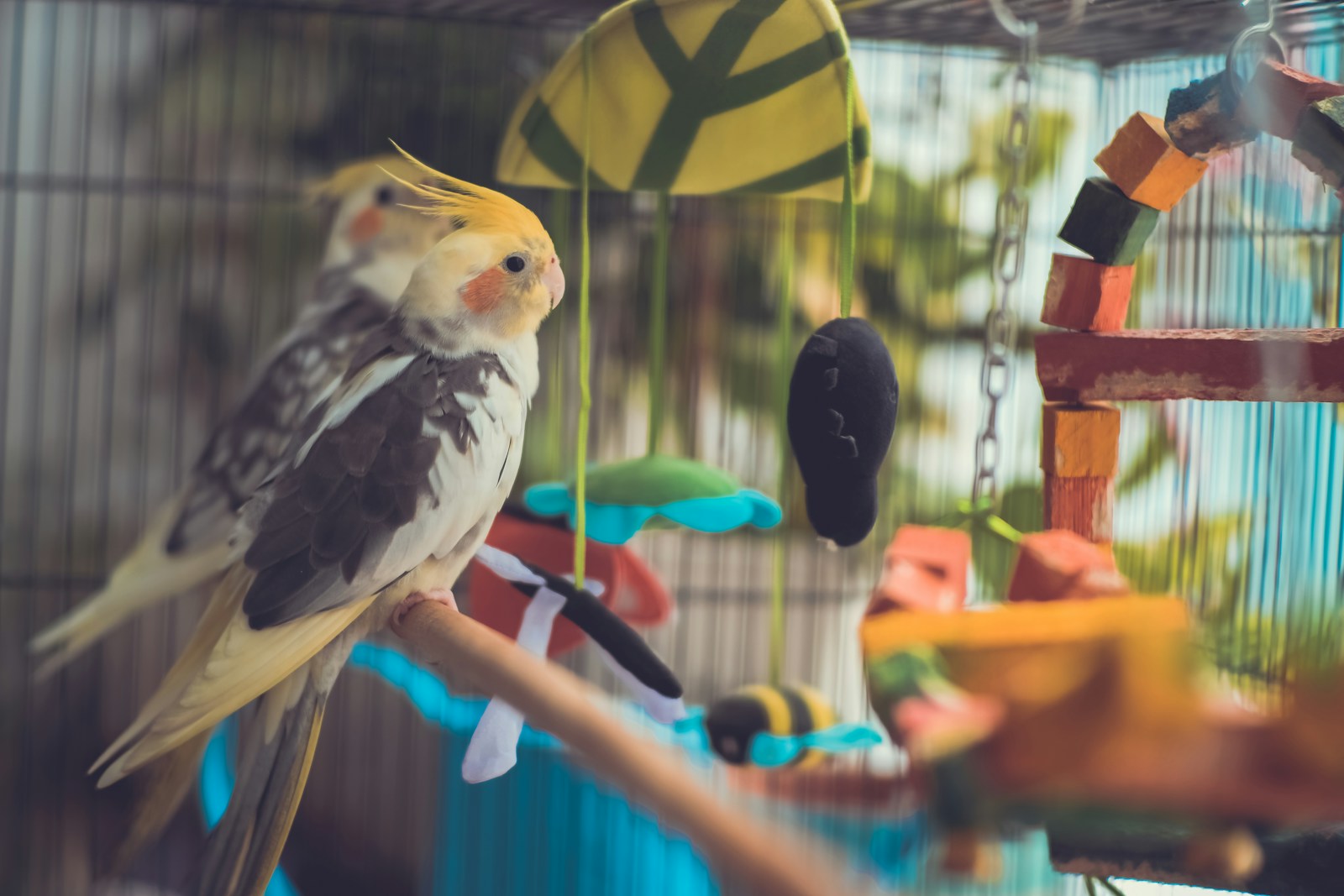
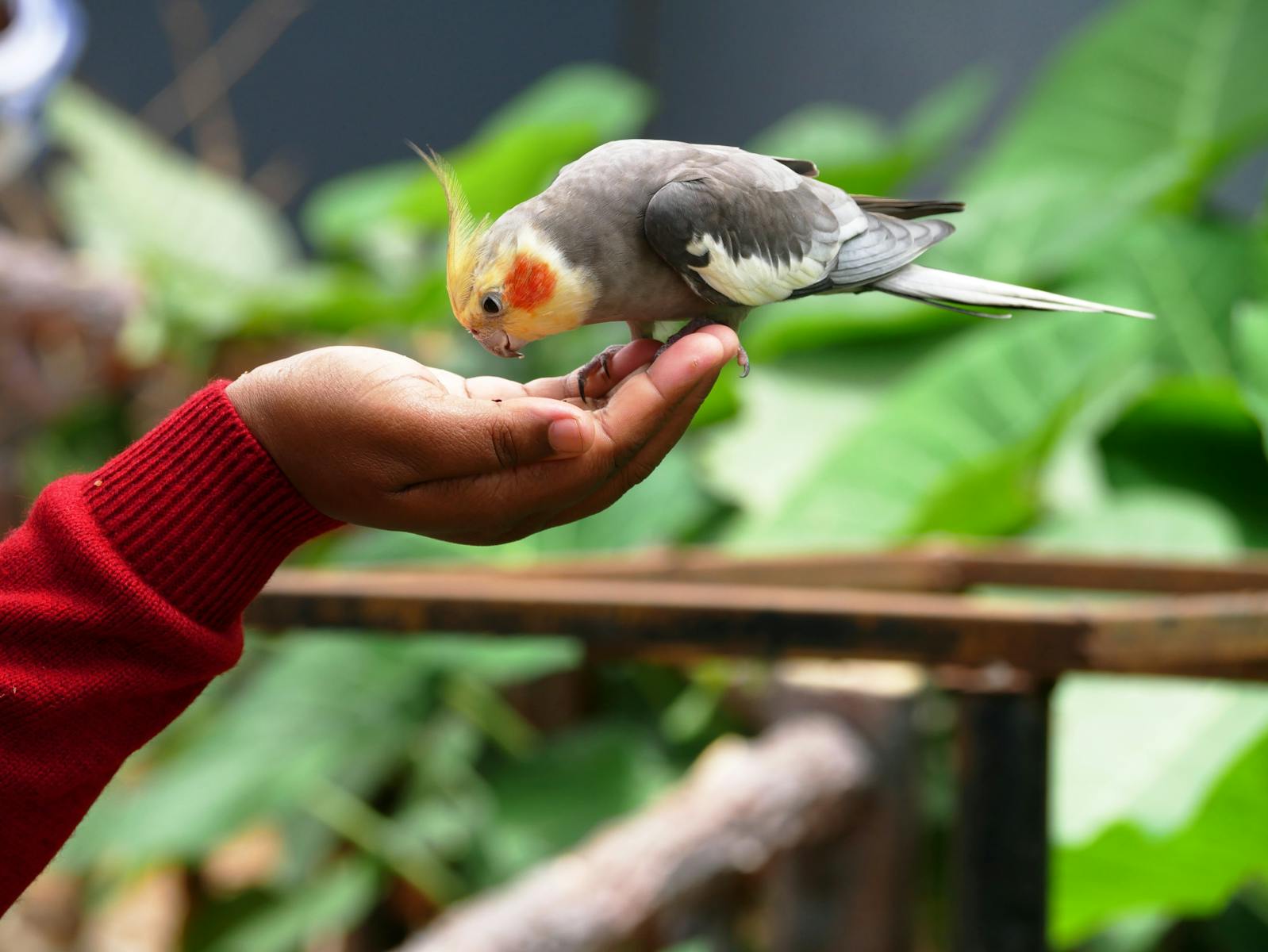
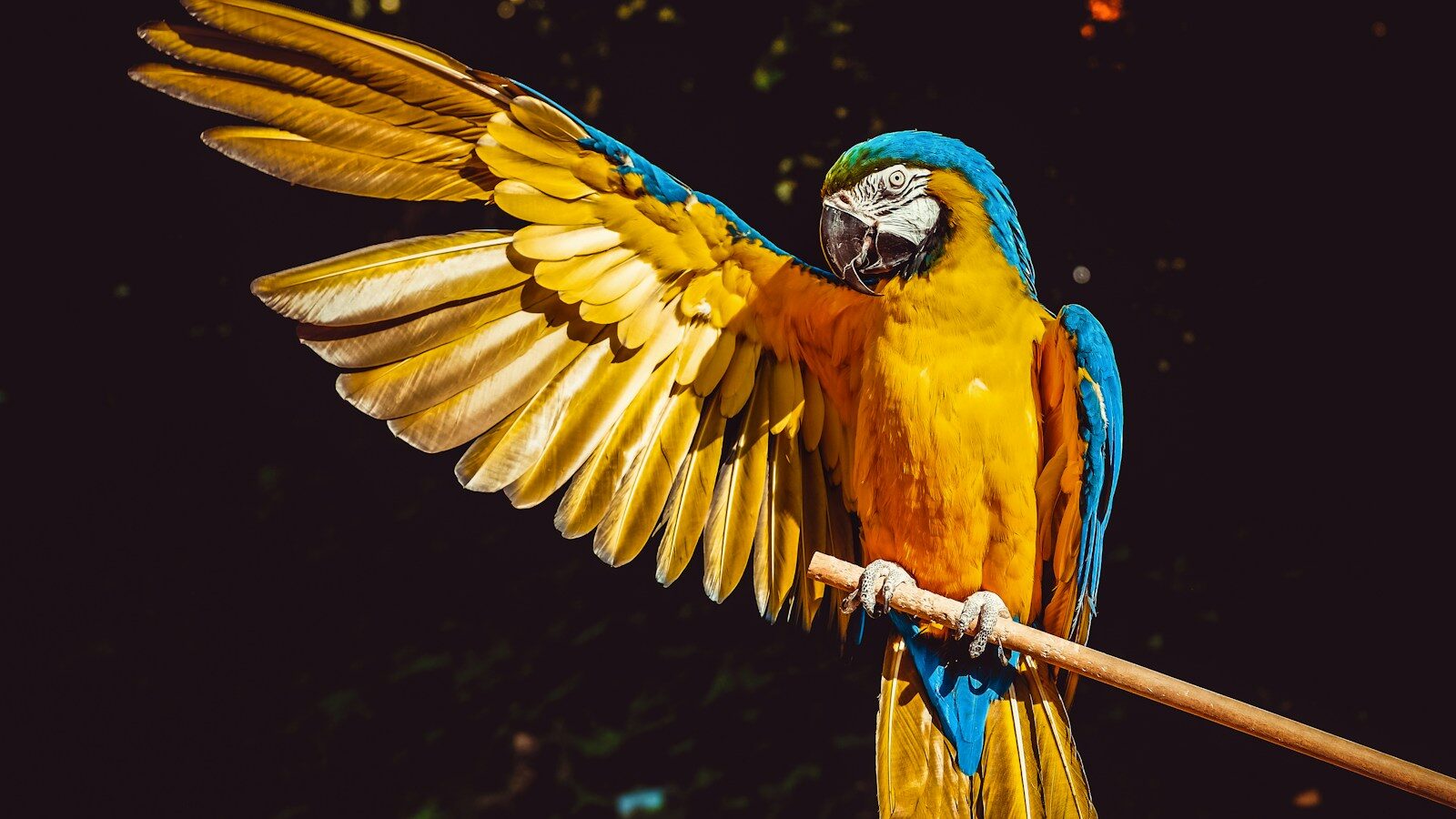

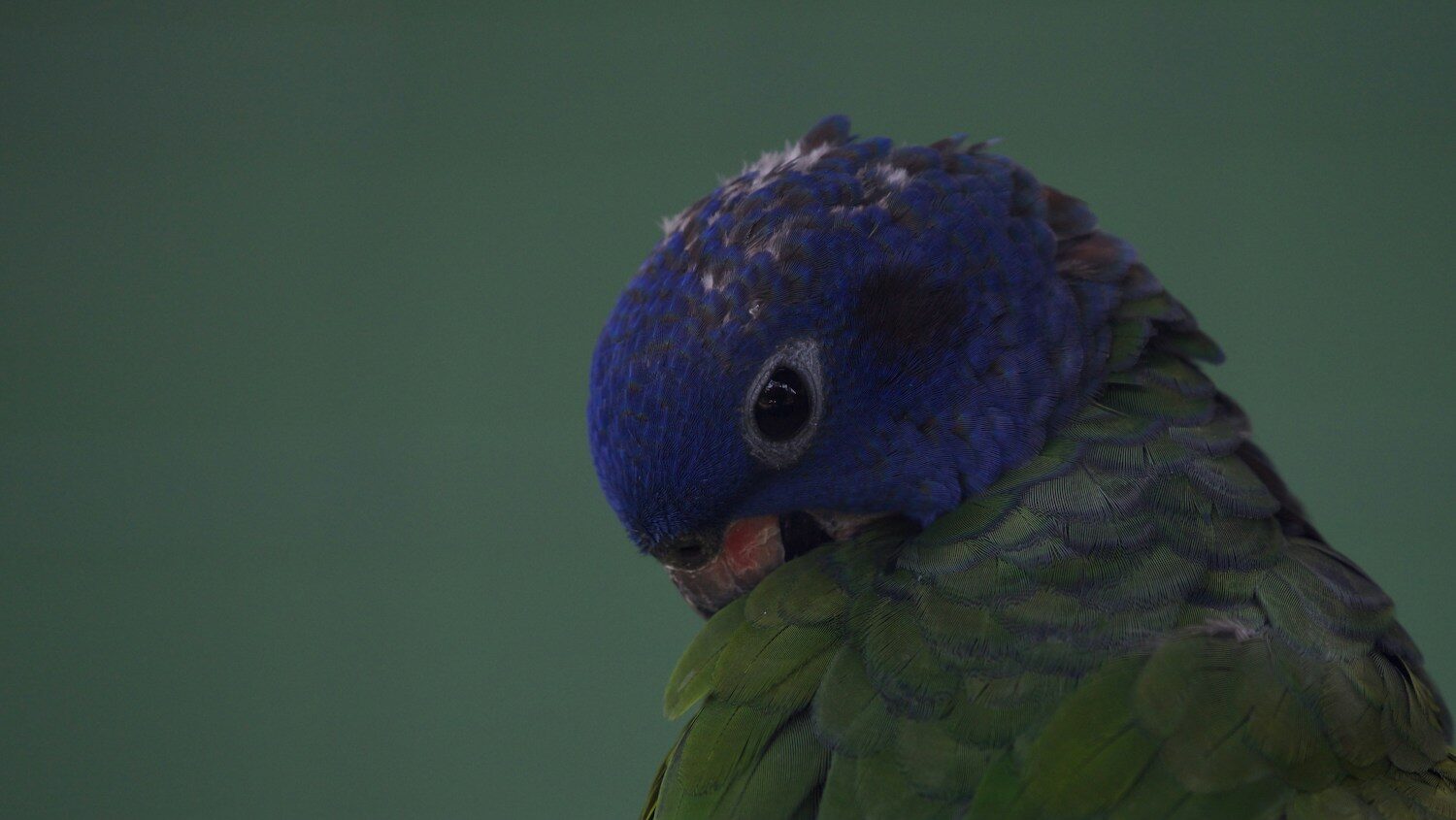

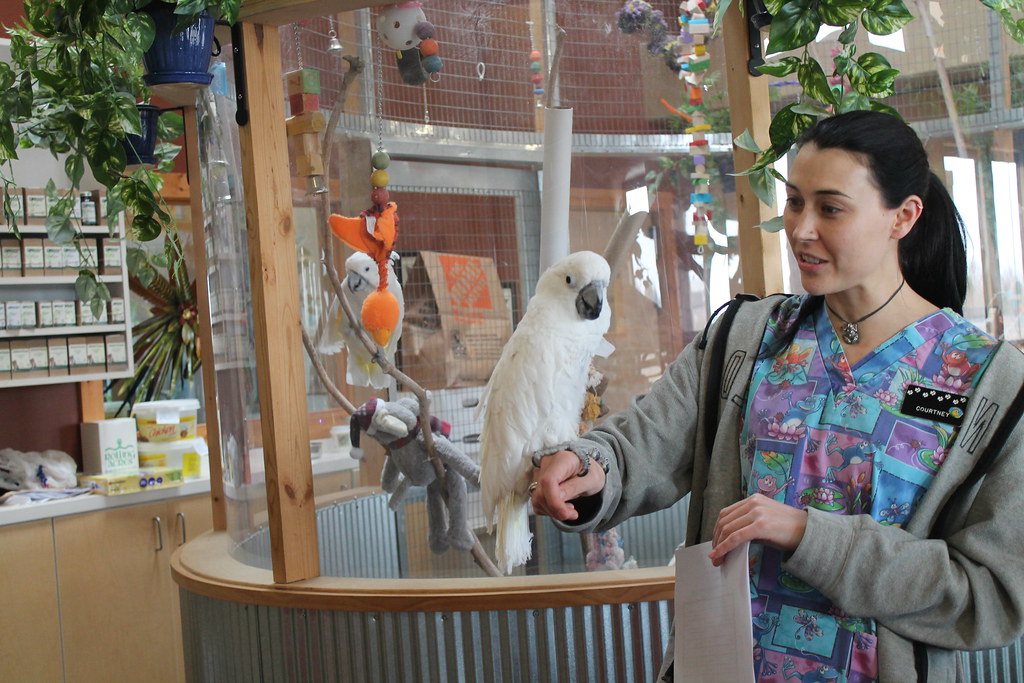




Leave a Reply